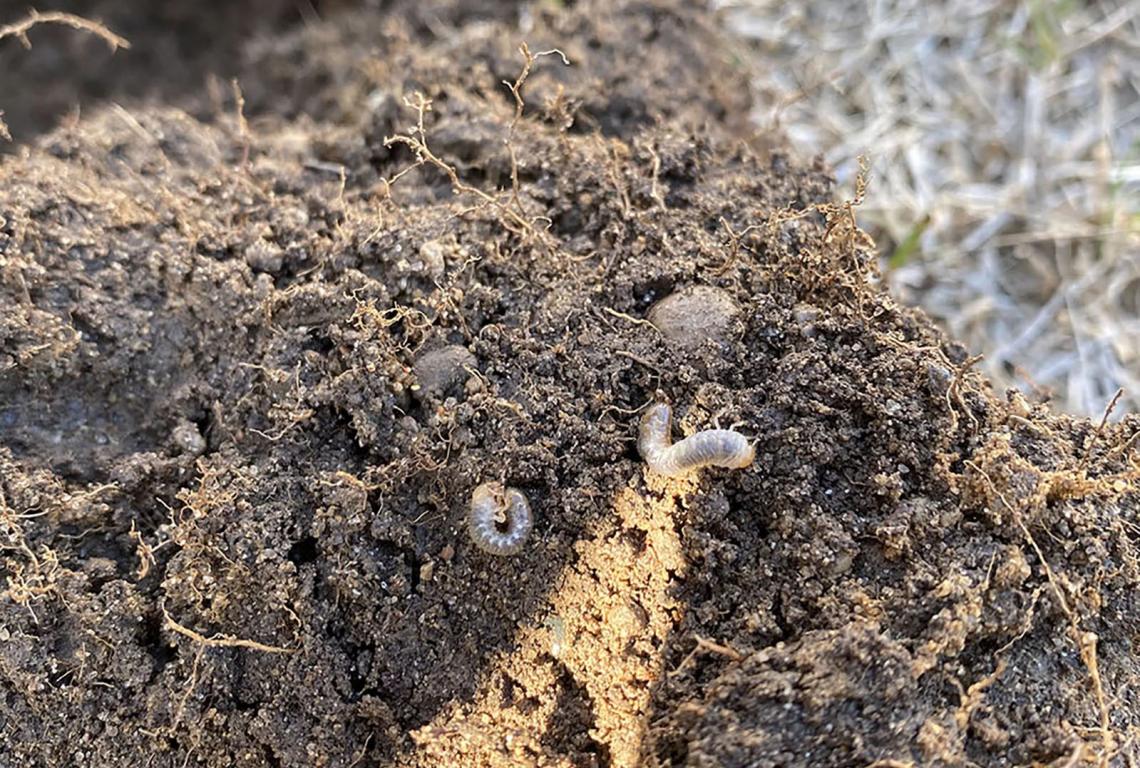Lawn Grub Control Program in League City, Pearland & Friendswood, TX
World-Class Lawn Grub & Pest Treatments
Lawn grub infestations can be a significant threat to the appearance and overall health of your lawn property. Many inspects, like various species of beetles, start out as grubs. These lawn insects burrow into your lawn’s soil and plant their eggs. These eggs eventually grow into the grubs that feed on precious grassroots, causing damage like dead patches of grass, discoloration, and other problems that leave your lawn and garden unsightly.
At Lawn Pride of League City, Pearland and Friendswood, we offer world-class lawn grub control services to property owners in League City, TX and the surrounding local communities. Our exclusive grub control program is specifically designed to safeguard your lawn and garden from lawn grubs and other destructive pests. With our comprehensive suite of highly effective lawn treatment and pest management strategies, your lawn will remain healthy, balanced, and well cared for from season to season. Learn more about our full-service lawn grub control program and get started today!
Recognize the Signs of a Grub Infestation
Grubs are a common nuisance among homeowners, but unfortunately, they can often go unnoticed. Because grubs live mostly underneath the surface, it’s wise to know how to identify when these pesky insects have taken control of your yard. Here are a few signs of grub infestations:
- Dead Grass – While damage from lawn grubs can appear in many forms, the most telltale sign is dead patches of grass. Grubs eat grassroots and other organic material below ground, removing your lawn’s primary source of water and nutrition.
- Rolling Dead Grass – One of the most reliable methods of discovering if grubs have sought shelter in your lawn and soil is to lift a section of grass. If you can easily roll this section of grass like a rolled-up carpet and spot some grubs in the soil, we highly recommend seeking professional lawn care.
- Beetles – Larval forms of beetles are the grubs that feed on your lawn. Many species of beetles, such as masked chafer beetles and June bugs, are considered pests that risk the health of your lawn and garden. Other species, like Japanese beetles, aren't threatened by natural predators to keep control of increases in their population. Beetles typically begin to surface and become visible between May and July, but it’s essential to have these pests managed before more severe problems begin to develop.

Preventative Grub Treatment vs. Curative Treatment
There are two main techniques for treating grub infestations – preventative treatment and curative lawn care. Lawn Pride’s preventative grub control application absorbs into the root system underground, killing off grubs once they try to feed. Our preventative treatment is guaranteed to safeguard your lawn from an infestation all year before it even starts! When an active infestation already exists, we leverage a curative approach to eliminate grubs that have had time to grow and rapidly eat into your grassroots.
While both methods can be effective in their own right, many circumstances will benefit from a combination of preventative and curative lawn care at different times of the year to manage varying grub lifecycles.

Grub Control – Frequently Asked Questions
Keeping lawn grubs at bay can be a confusing challenge. We want homeowners like you to be well-equipped with accurate information, so you know how to address a grub infestation. Here are some of the most commonly asked questions we receive regarding lawn grubs:
What are lawn grubs?
Grubs are the larval stages of various beetle species. These insects begin their life as eggs that grow into larvae resembling small worms. Since they grow in clusters, finding one grub in your lawn means there is likely a bigger problem.
Will winter kill off grubs in my lawn?
The cold months of winter can threaten a small percentage of grub populations, but letting nature take care of a grub infestation won’t be enough. Grubs will seek shelter from the cold by digging deeper into your property until temperatures begin to rise.
What time of year is best to treat my lawn for grubs?
The best time to perform grub control treatments will certainly depend on your location, local weather patterns, and the current condition of your lawn. Success with preventative treatments can usually be achieved in late spring to early summer when grubs begin to hatch and become active. Curative treatments are often more effective when grubs mature, leaving them most vulnerable around mid-to-late summer.

Choose Lawn Pride to Safeguard Your Lawn & Property
If you're faced with a frustrating lawn grub infestation, don't fret! Lawn Pride of League City, Pearland and Friendswood possesses the industry-leading insights and advanced expertise needed to eliminate the threat of pests from your Texas property. Gain the Lawn Pride advantage and contact us to join our grub control program by requesting a complimentary estimate today!




